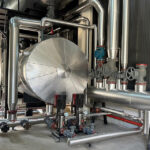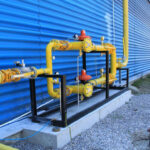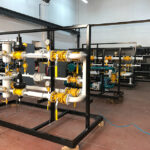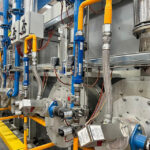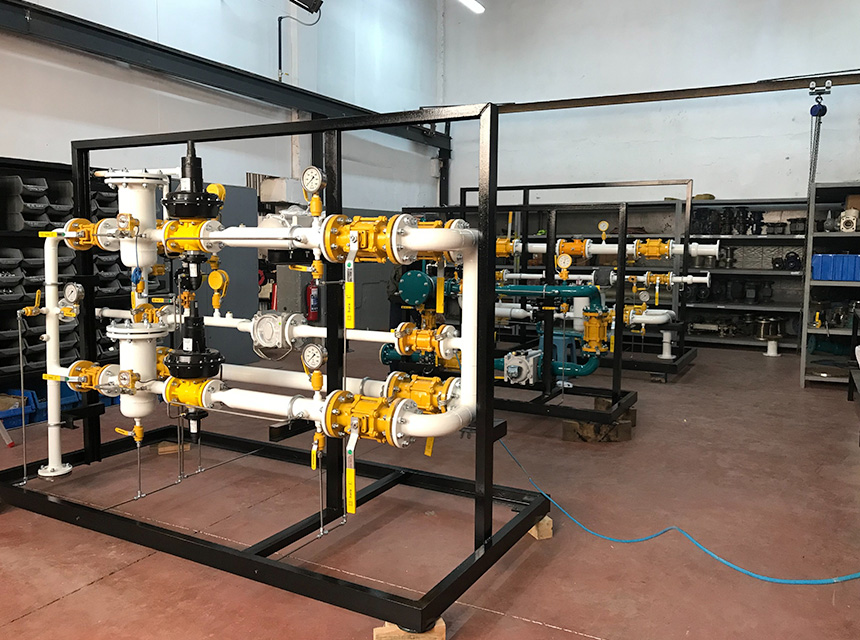
How Do Natural Gas Pressure Reducing and Metering Stations Work?
Natural gas pressure reducing and metering stations are among the most critical infrastructure components in the journey of natural gas from its source to the end user. These stations are established to ensure the safe, continuous, and consistent flow of natural gas. Natural gas, which is transmitted at high pressure, needs to be reduced to lower pressures suitable for distribution and consumption points. At the same time, the flow rate and quality of the gas passing through these stations are measured and recorded for both legal inspections and system efficiency. These systems are vital, especially for industrial facilities, organized industrial zones (OIZs), power plants, and large-scale enterprises.
Natural gas is transported under high pressure in transmission lines. This pressure is typically measured in bar levels and can reach up to 70 bar in the network. However, consumer points such as residential areas, commercial enterprises, or industrial facilities operate at much lower pressures. This is where natural gas stations come into play. These stations reduce the gas to the appropriate operating pressure and ensure the system runs smoothly through precise measurements.
The main components of a natural gas pressure reducing and metering station include filtration systems, regulators, valve systems, measurement lines, heaters, bypass lines, and safety equipment. First, the gas enters the filter, where unwanted substances such as dust, dirt, and liquid residues are removed. This process protects the lifespan of both the regulators and the downstream systems. After filtration, the regulator reduces the gas pressure to the desired level. These regulators are usually integrated into automatic control systems and operate to keep the outlet pressure stable.
Once the gas pressure is adjusted, it is directed to the measurement line. Measurement systems typically use turbine meters or ultrasonic meters. These meters calculate the gas flow along with parameters such as temperature and pressure, providing traceability of consumption and forming the basis for billing. In high-consumption facilities, these measurements are mandatory for transparent data generation for both the distribution company and the customer.
In some cases, the internal temperature of the gas may be very low due to outdoor conditions. Low temperature can cause condensation and freezing risks within the system, leading to blockages or damage in the pipelines. For this reason, some stations use hot water boilers or electric heaters to heat the gas. Heating systems ensure that the gas is transferred under optimal conditions. At this stage, sustainable operation can also be achieved with models integrated with solutions such as hot water plants and installations.
Safety systems play a major role in ensuring that everything runs smoothly in natural gas stations. Safety valves that activate in case of overpressure and bypass lines for regulator failures ensure uninterrupted operation. In addition, each station has automatic gas shut-off systems for emergencies, which are important for both operator safety and environmental protection.
Natural gas pressure reducing and metering stations are generally built on concrete platforms. Installation must comply with the technical specifications of gas distribution companies. During installation, material selection and engineering calculations must be carried out meticulously, and all systems must be documented in accordance with TS EN standards. These details are also evaluated within the scope of indoor installation – natural gas infrastructure applications prepared specifically for the project.
Another important feature of these systems is their integration with automation systems. Thanks to remote monitoring systems such as SCADA, operators can monitor the status of the stations in real time and take immediate action in case of any malfunction or abnormal situation. This minimizes downtime, reduces energy loss, and ensures customer satisfaction.
For high-capacity stations built for industrial facilities, pressure reducing and metering systems are often configured based on the special process machine design and manufacturing principle. In such stations, each component is customized according to the project's gas consumption capacity, safety requirements, and automation infrastructure. Installing these systems requires advanced engineering knowledge and experience.
The design and installation of natural gas stations involve not only technical but also legal processes. Approval must be obtained from the relevant gas distribution companies for each installation, the system must pass testing before commissioning, and the official opening procedure must be completed. During these processes, technical details and approval documents regarding natural gas stations must be presented in full.
On the maintenance side, it is recommended to carry out a comprehensive inspection and cleaning at least once a year. These inspections should include filter replacement, regulator adjustments, meter calibration, and testing of safety systems. Otherwise, serious issues such as blockages, pressure fluctuations, or inaccurate measurements may occur. For long-lasting and efficient use, the integration of support systems such as compressed air systems and installations is also recommended.
With the increase in natural gas infrastructure investments, pressure reducing and metering stations have become more widespread and technically sophisticated. Today, these systems are not only part of energy distribution but also strategic elements in terms of a business's energy efficiency, cost management, and sustainability.
Therefore, during the design, installation, and operation of these stations, support from experienced engineering teams should be sought, and projects should be planned to integrate not only the hardware but also the software and control systems. These stations are not only responsible for regulating gas flow but are also key to energy security.

